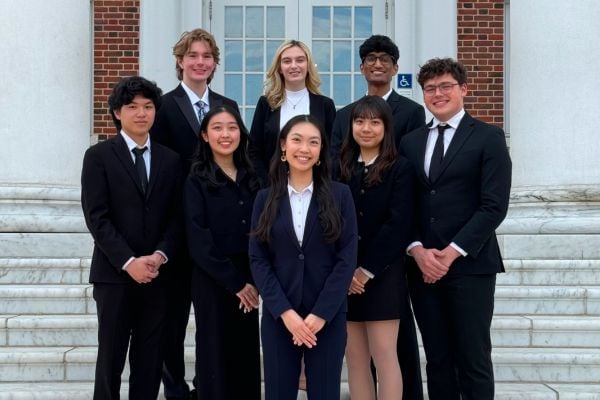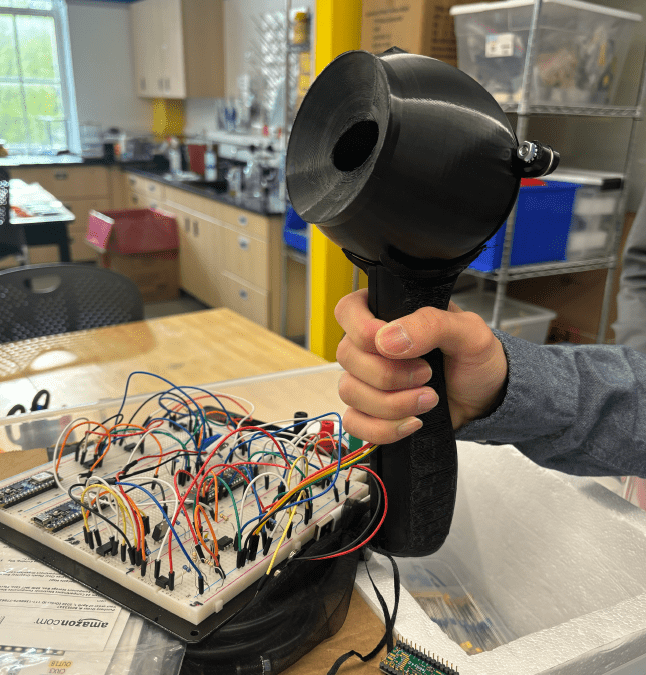An estimated 80 million people around the world suffer from glaucoma, a group of chronic, progressive eye diseases caused by damage to the optic nerve often due to excessive fluid buildup in the eye. Glaucoma is a leading cause of irreversible blindness, especially in low- and middle-income countries where many patients have difficulty accessing professional eye care, including consistent symptom monitoring.
A team of Johns Hopkins biomedical engineering students is working on a device that could be a game-changer for those with limited access to glaucoma care.


